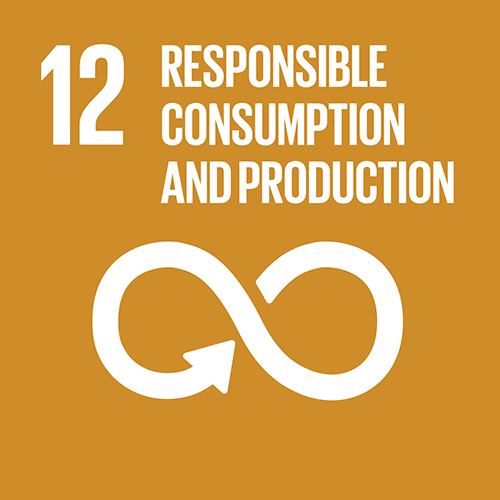Climate-smart Forest Management in Dornbirn, Austria
Project type: Land Use and Forestry
Project location: Austria, State of Vorarlberg, City of Dornbirn
Project status: In operation, credits available
Annual emission reduction of the whole project: Up to 2355 tCO2 per year (avoidance) over 30 years
This climate protection project in Dornbirn, Vorarlberg, Austria, aims to maintain and increase timber stock and carbon stock through adapted forest management. The income from the project is earmarked for sustainable forest management, adapting the forest to climate change, biodiversity measures and safeguarding ecosystem services.
Forests are diverse and complex ecosystems. They provide essential ecosystem services to both people and the natural environment. Article 5 of the Paris Agreement underlines the important role of forests in the fight against climate change and states that forest carbon stocks should be maintained or enhanced. Why is this so important? Trees and forests play a central role in regulating the climate by absorbing carbon dioxide from the atmosphere through photosynthesis and storing it as carbon in biomass, especially in wood. They also produce oxygen, filter pollutants from the air and release moisture into the atmosphere through evaporation. Forests protect against natural hazards, regulate the hydrological cycle and the water-holding capacity of the soil, produce organic biomass in the form of wood, leaves and needles, and provide a habitat for flora and fauna. Seeds, roots, herbs, berries and mushrooms can be found in forests. These are some of the few renewable resources that can be managed by humans in a natural and sustainable way. Forest resources provide valuable jobs as well as local forest- and wood-based value chains. Forests play an important role in local recreation, culture, health and tourism.
Climate Protection Through Carbon Sequestration in the Dornbirn Forest
The forest district of the city of Dornbirn is located in Austria, in the tri-border area with Switzerland and Germany, at the south-eastern end of Lake Constance and at the start of the Austrian pre-Alps. The climate protection project of the city of Dornbirn covers an area of 1277 hectares, all of it within the forest property of the city of Dornbirn. The forest will continue to be managed and maintained by the Dornbirn forestry service. However, as part of the project, this forestry service has committed to using less wood than would otherwise be possible for at least 30 years. The forestry company is compensated for the conscious decision to forego future financial income from the sale of timber by the income from the climate protection project. The average timber stock in the forest district is around 345 cubic metres per hectare (m3/ha) and could be reduced to as low as 290 m3/ha. By avoiding some utilisation, less wood is harvested and therefore less carbon dioxide is released from the forest ecosystem, which is known as CO2 avoidance.
Measuring and Ensuring the Effectiveness of the Project
Every year, the district forestry inspectorate submits its wood utilisation figures and any dead trees to the Vorarlberg State Forestry Administration. These official wood utilisation statistics for the ISO-certified climate protection project are checked and verified annually by an independent third party, TÜV Austria. This ensures that the project is developing according to plan and that only the effective annual carbon sink is recognised. In order to hedge against risks such as storms and disasters and thus ensure the sustainability of the project, ten per cent of the project’s calculated tonnes of CO2 are deposited annually in a risk buffer with myclimate’s partner Tree.ly.
Adapting to Climate Change and Promoting Biodiversity
The forests of the city of Dornbirn will not only store more carbon in the future, but also secure it in the long term. Thanks to the earmarked income from the climate protection project, measures for sustainable forest management will be promoted, as well as measures to adapt the forest to climate change and to conserve biodiversity. In addition to adapting the forest to climate change, biodiversity is a crucial element for the resilience of forest ecosystems. Both globally and locally, forest ecosystems are under severe pressure from climate change and biodiversity loss. This pressure will increase during this century. Extreme events such as storms and droughts are expected to increase, and climate models predict changes in annual precipitation patterns. Among other things, this can lead to an increase in insect populations such as the bark beetle, and globalisation also introduces new organisms from other continents that can damage the forest system.
The forestry service of the city of Dornbirn has defined its strategy for adapting the forest to climate change and biodiversity measures in its forest management plan. The forests in the district have been actively rejuvenated for decades and have been managed to create multi-layered, site-appropriate and stable mixed forests. The district forester and head of forestry for Dornbirn, Andreas Scherer has been responsible for the sustainable management of the town’s forests for more than 20 years, and says that the creation of climate-stable mixed forests has been a success:
Thanks to the funds from myclimate, essential measures that have unfortunately been postponed for years for financial reasons can finally be implemented. Particular attention is being paid to good nursery conditions in the forest. Through numerous maintenance measures, our stands can be led into the future in a qualitative and climate-stable manner.
This project contributes to 4 SDGs *
*as at the end of 2024. Find out how myclimate reports these SDGs in our FAQ.
The City of Dornbirn is committed to the protection, welfare, recreation and habitat functions of its forests, recognising their key role in the protection of the city and the well-being of the environment
The project sustainably manages an area of more than 1270 hectares of forest.
Through climate-smart management, 70’650 t CO2e emissions are avoided (avoidance).
Climate-smart management also promotes biodiversityand additional biodiversity measures are implemented.
Situation without project
Lower timber stock, meaning a lower carbon stock in the forestProject standard

Project number
7843















